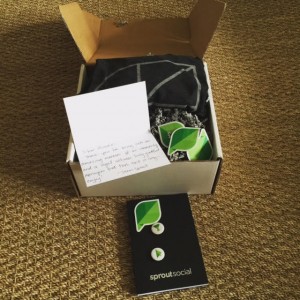
Oh, email. It’s one of the top things we professionals love to complain about—second only to traffic, unreliable Wi-Fi connections and the length of time it takes to disembark a plane. (Seriously, though. There’s got to be a more efficient system.)
But as much as we bellyache about our over-stuffed inboxes and ruthlessly delete unreads, we expect our customers to rejoice with each new email marketing communication we send their way. And, somehow, allow ourselves to feel deflated by an ever-climbing unsubscribe rate.
It sure is comfy here in our glass houses.But the truth of the matter is, your prospects are just as burnt out by email as you are. They’re only interested in the stuff that truly enriches their lives—messages worth opening, reading and sometimes even clicking. And, unfortunately, these messages may not be yours. But they can be.
Today we’re going to talk about seven reasons your email campaigns are making prospects unsubscribe, and how you can fix this.
1. They’re a Snooze Fest
Hi Carrie—Did you know our service can help you increase sales? We’re a cutting edge software service that uses big data to buzzword buzzword buzzword. Click here for a 30-minute demo.
Zzzzzz.
Do you know how many emails your customers receive asking them to buy a service, download an eBook, register for a webinar or take some other sort of action? Somewhere around eleventy gazillion. If you’re not presenting your offer in a way that’s unique, they’re going to pass it up.
The best way you can separate yourself from the noise is to WAKE UP! Be fun, interesting, humorous, exciting. … Be anything but ho-hum traditional.
For example, last May I received this adorably funny email from MarketingProfs that actually made me laugh out loud. In fact, it made such an impression I still remember it nearly a year later, and dug through my inbox to share it with you now.

Not only is this email design aesthetically pleasing, the language is engaging and clever. Now I faithfully open every email MarketingProfs sends.
2. You Aren’t Offering Real Value
The whole point of an email is that you have something so earth-shakingly important, you had to make sure your prospects saw it immediately. You believe the content of your message is so profound, you felt it worthy of your subscribers’ valuable inbox real estate. If not, you’re just taking up space.
Never send an email for the sake of sending an email. Frequency of communication alone does not create a relationship. Each and every message should include something valuable—whether it’s a special offer, a head’s up about a great piece of content, breaking industry news or something else that makes your prospect feel their attention wasn’t wasted.
3. Your Email Design isn’t Mobile-First
I could rattle off a thousand statistics about how most people check their email on a mobile device. Like here, here and here. But instead, I’m going to be brutally honest: It’s 2016. If your emails aren’t rendering beautifully on mobile—as in, they aren’t responsive to a smaller screen size—you may as well not even send them. Sure, some of your prospects might be checking from their desktop. But do you really want to take the risk? With so many people glued to their mobile devices, any email that requires pinching and zooming is getting trashed.
4. You’re Talking About Yourself Too Much
Your prospects don’t care that you won some big industry award, recently redesigned your office space or added another member to your team. All they care about is what’s in it for them. Before you launch an email, ask yourself:
- Am I addressing any persona pain points?
- Am I helping my prospects solve a problem?
- Am I improving my subscriber’s life, job or lunch hour with the content of this message?
If you can’t answer “yes” to at least one of the above, it’s time to re-think your strategy and shift your focus to your customers.
5. You’re Too Verbose
In the world of content marketing, we often focus on being concise and exercising brevity. This isn’t because we’re trying to do less work. If anything, writing short is more work. (Mark Twain once said, “I didn’t have time to write a short letter, so I wrote a long one instead.”)
The reason we like to keep content succinct is because we know the average human attention span is about eight seconds. And the attention span of a busy professional wading through emails is even shorter. If your subscriber opens your message to see several lengthy paragraphs, there’s a pretty good chance it’s going straight to the trash folder.
A good way to keep your emails short is to introduce a topic, and link to a blog post, article or landing page with more in-depth information. Or break one lengthy message up into a series. People love episodic content.
6. You Aren’t Taking Advantage of Personalization
This may be the information age, the epoch of Big Data, but businesses don’t always use their databases to guide their email strategies. That’s likely because it seems like a lot of work. And if you’re not using marketing automation software, it probably is. But if you have the technology, use it! Segment your email lists by persona, industry, life cycle stage or whatever else makes sense for your campaign, and then address the specific concerns within each segment.
This also will help keep you from sending contacts communications that aren’t relevant to their current wants and needs. For example, case studies about products or services a customer has already purchased.
7. You Don’t Really Know Your Personas
If you haven’t properly assessed your buyer personas’ pain points, more than your email engagement rates will suffer. Not truly understanding the challenges your prospects encounter every day means everything from your website messaging to your sales strategy is off mark.
And as a busy professional, there’s nothing worse than being inundated with information that has nothing to do with you or your needs.
The best solution is to revisit your buyer insight process. By taking time to better understand what drives your prospects’ decisions, you can better tailor your email messaging to their experiences.
Email is still a critical part of your marketing strategy, and can be one of your best tools for building and maintaining relationships with prospects and customers. But while a certain amount of unsubscribing is common, an increase in unsubscribe rates can be a sign that you’re guilty of one or more of the above pitfalls. Take the time to ensure your campaigns are interesting, valuable, mobile-friendly, easy-to-read and focus on the specific challenges and experiences of your buyer personas so you get better ROI for your email efforts.
Digital & Social Articles on Business 2 Community(49)
Report Post





